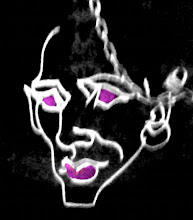Harbingers
There has been much time for reflection on the changing neighborhood, the changing borough and the constantly changing city in which I've grown up. Static, no. Dynamic, yes. That sums up a lot of what New York is. However, outer borough lifestyle certainly maintains more static nuances in everyday living. This goes beyond realestate. One past time I've always kept at is that of a city-walker. You venture through the grit, the concrete, the asphalt and use many clichéd words along the way, but you have that freedom to merely walk and use the muscles in your legs to travel. I feel that, in addition to walking, to stop and observe is a necessity for city-walking. Many agree and practice these two activities, and based on them, one cannot help but notice that there is a constant lingering of cranes that has become the norm for neighborhoods outside of Midtown. A barrage of development for outsiders moving into the formerly poorer areas.
This push and transformation is part of what is commonly called gentrification. And, as the link will outline, white people love this. These aren't merely youngins on the subway wearing black NY Film Academy hoodies, so-called TNHs (Transient Nard Heads) who more than likely cannot fathom things like community gardens being built and maintained solely by a junior high school in the ghetto.
Labeling a group of people aside, the move is not met with absolute animosity or bitter resentment. Many business owners seem to welcome it without the same amount of qualms as long-lived residence. They can only look towards higher profits if they can mold their business with the likes-dislikes of the new residence in mind. However, there are many who feel betrayed and like second-class citizens. One, of course, cannot blame anyone who is moving into the luxury highrises (families wanting a new breath on life) but it is easily and vindicative to put blame on the lethargy of the City Council, the poorly managed Department of Buildings and the Bloomberg administration.
An outline of the frenzy in NYC
The demand for affordable housing
The greed of landlords
Reflections on the old grime, now gone
With inevitable change, where will things go? How will the face you see on the street change? A snap shot of Greenwich Village in 1920 and 1980 are certainly different with the types of faces one will encounter (technological advancements aside) The faces one is likely to meet on the street in the village in 40 years will likely contrast that of 1980 greatly. Even in 10 years from now, the types of people one is likely to meet on the street will have swung widely in one direction from a long-standing position. That pendulum swing can be seen through the barrage of development.
Here is a short series of photos that characterize the invasion of bedazzling glass facades and cranes.








This push and transformation is part of what is commonly called gentrification. And, as the link will outline, white people love this. These aren't merely youngins on the subway wearing black NY Film Academy hoodies, so-called TNHs (Transient Nard Heads) who more than likely cannot fathom things like community gardens being built and maintained solely by a junior high school in the ghetto.
Labeling a group of people aside, the move is not met with absolute animosity or bitter resentment. Many business owners seem to welcome it without the same amount of qualms as long-lived residence. They can only look towards higher profits if they can mold their business with the likes-dislikes of the new residence in mind. However, there are many who feel betrayed and like second-class citizens. One, of course, cannot blame anyone who is moving into the luxury highrises (families wanting a new breath on life) but it is easily and vindicative to put blame on the lethargy of the City Council, the poorly managed Department of Buildings and the Bloomberg administration.
An outline of the frenzy in NYC
The demand for affordable housing
The greed of landlords
Reflections on the old grime, now gone
With inevitable change, where will things go? How will the face you see on the street change? A snap shot of Greenwich Village in 1920 and 1980 are certainly different with the types of faces one will encounter (technological advancements aside) The faces one is likely to meet on the street in the village in 40 years will likely contrast that of 1980 greatly. Even in 10 years from now, the types of people one is likely to meet on the street will have swung widely in one direction from a long-standing position. That pendulum swing can be seen through the barrage of development.
Here is a short series of photos that characterize the invasion of bedazzling glass facades and cranes.








Labels: critique, photo-series


2 Comments:
Thank you for writing this.
Williamsburg is like the "New Bohemia" ride at Disneyland, "SEE! Real Artist at Work!". Around my home, the development in in the form of strip malls, Big boring predictable houses and the cutting down of ALL the forests I used to play in as a child. I just stay far away from those areas now, it sucks a big one.
Post a Comment
<< Home